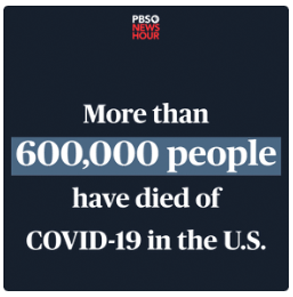Radar on Drug Benefits
-
UnitedHealth Program Aims to Give Employers More Bang for Their GLP-1 Bucks
Employer plan sponsors in recent years have struggled to contain the costs associated with the increasing demand from beneficiaries to use GLP-1 medications for obesity and diabetes. For instance, Aon, a health benefits consultant, found there was an 87% increase in spending on GLP-1 drugs in 2023 due to higher utilization. And JPMorgan analysts predict the GLP-1 market could exceed $100 billion by 2030, when 30 million U.S. residents (or 9% of the population) could be taking the medications.
To address the growing obesity treatment market, UnitedHealthcare is offering the Total Weight Support program for self-insured employers. Rhonda Randall, M.D., chief medical officer for UnitedHealthcare’s commercial business, says managing weight loss drug costs “has been a significant priority for us and our employer customers.”

-
MedPAC Explores Drug Coverage Plan Problems as Part D Stand-Alone Plan Access Declines
The Medicare Payment Advisory Commission (MedPAC) is analyzing the differences between Medicare outpatient drug coverage in Medicare Advantage prescription drug (MA-PD) plans and stand-alone Prescription Drug Plans (PDP), ideally to help preserve stand-alone plans as an ongoing option for beneficiaries.
Concerns about declines in the number and attractiveness of PDPs in recent years relative to MA-PD plans, which appears to be exacerbated by the Part D redesign established by the Inflation Reduction Act, is driving the work. MedPAC discussed the issue at its Nov. 7 public meeting.

-
News Briefs: CMS Proposes Rule Expanding Medicare, Medicaid Coverage of Anti-Obesity Drugs
CMS in a proposed rule issued Nov. 26 included a provision that would significantly expand Medicare and Medicaid beneficiaries’ access to anti-obesity medications. Currently, Medicare does not cover FDA-approved weight loss medications such as Wegovy (semaglutide) or Zepbound (tirzepatide), but it does cover those drugs when used to treat diabetes under the brand names Ozempic and Mounjaro, respectively. Under the newly proposed rule, CMS is proposing to reinterpret the Medicare statute, starting in 2026, “to no longer exclude anti-obesity medications for the treatment of obesity from coverage under Medicare Part D and to require Medicaid programs to cover these medications when used to treat obesity,” CMS said. Just 13 state Medicaid programs covered GLP-1s like Wegovy and Zepbound for treating obesity as of August 2024, according to KFF. The Congressional Budget Office estimated in October that authorizing Medicare to cover anti-obesity medications would increase federal spending, on net, by about $35 billion from 2026 to 2034. But CMS estimated that, if implemented, the new proposal would increase federal costs by $24.8 billion due to expanded Part D coverage and $14.8 billion due to expanded Medicaid coverage, over a 10-year period.
-
From Lame Duck to GOP Trifecta, Path for PBM Reform Remains Fuzzy
With Donald Trump set to be the 47th president and Republicans in control of both chambers of Congress, 2025 is shaping up to be a year in which the GOP has enough political might to pass PBM reform — if it has the political will.
Yet two pharmaceutical industry trade groups do not appear to be counting on Republicans’ ability to quickly prioritize a health care issue. Instead, the Pharmaceutical Research and Manufacturers of America (PhRMA) and the National Association of Manufacturers (NAM) are both launching ad blitzes aimed at pressing Congress to target PBMs before the year is over.
“As Congress returns for the final legislative session, they have an opportunity to pass PBM reform that will make medicines more affordable and accessible for patients,” stated a Nov. 11 press release from PhRMA about its new ad campaign.

-
While Costs Have Fallen for Hepatitis C Drugs, Medicaid Programs Still Restrict Access
Several state Medicaid programs continue to restrict access to hepatitis C medications that could cure beneficiaries, reduce health inequities and decrease health care costs, according to a JAMA Network Open study authored by Centers for Disease Control and Prevention (CDC) employees. Nathan W. Furukawa, M.D., the lead author, tells AIS Health that while the restrictions have eased over time, more needs to be done to help patients and eliminate a disease that has multiple curative treatments.
The authors noted that since the FDA first approved oral direct-acting antivirals (DAAs) for hepatitis C in 2013, the medications have proven to be associated with cure rates of greater than 95% within 8 to 12 weeks. However, usage of the medications has been less than expected in part because payers are wary of their high costs. For instance, they said DAAs cost between $84,000 and $94,500 per treatment initially, although the costs have fallen to $11,500 to $17,000 after rebates and pharmacy discounts, according to an estimate this summer from the Congressional Budget Office (CBO). Common DAAs include Sovaldi (sofosbuvir) and Harvoni (ledipasvir/sofosbuvir).












